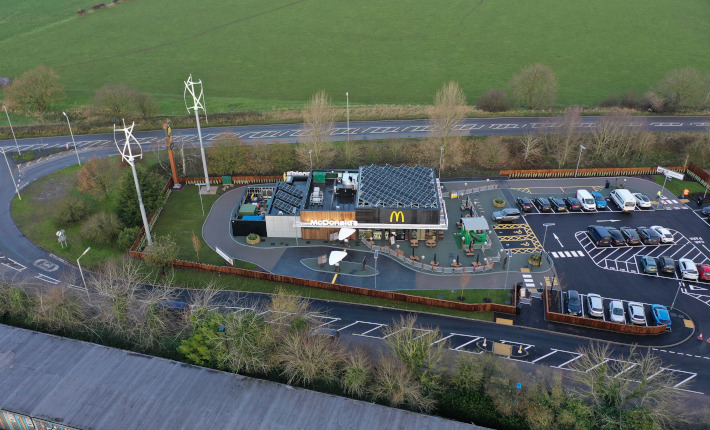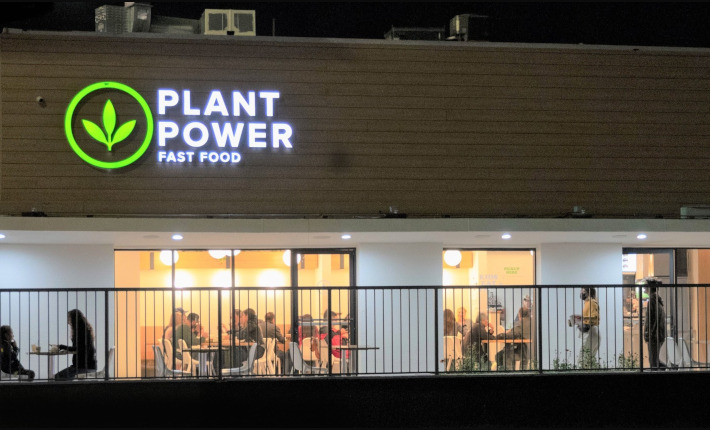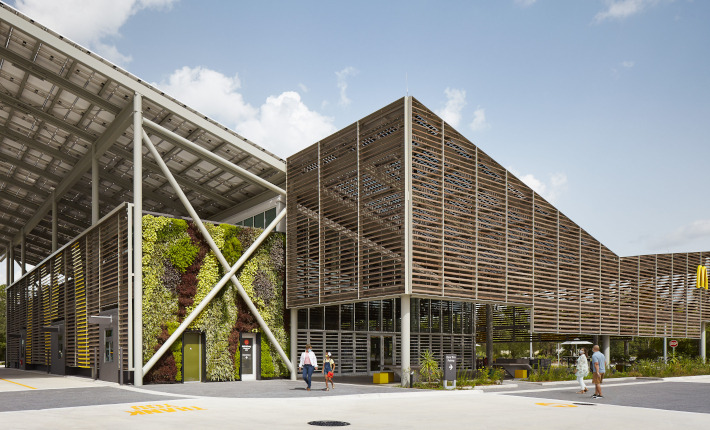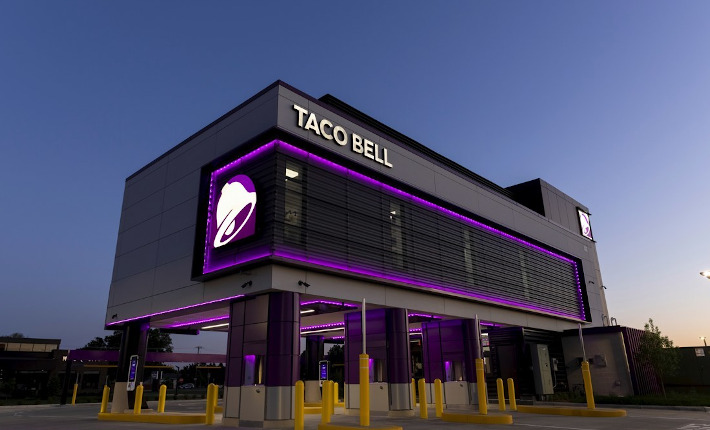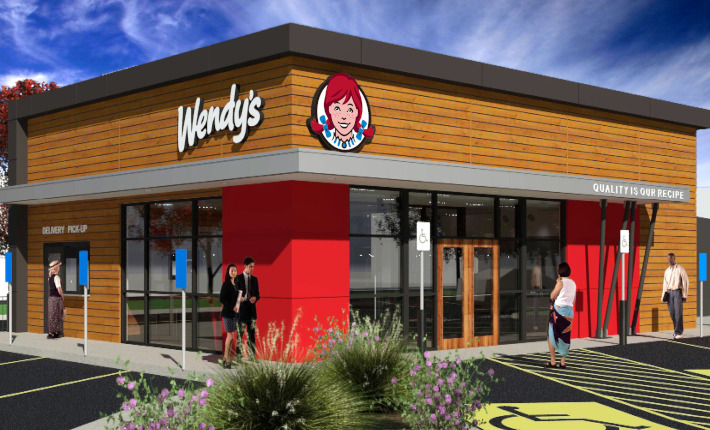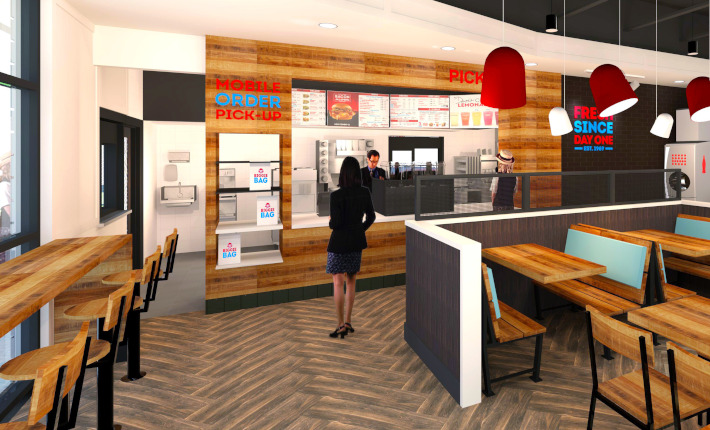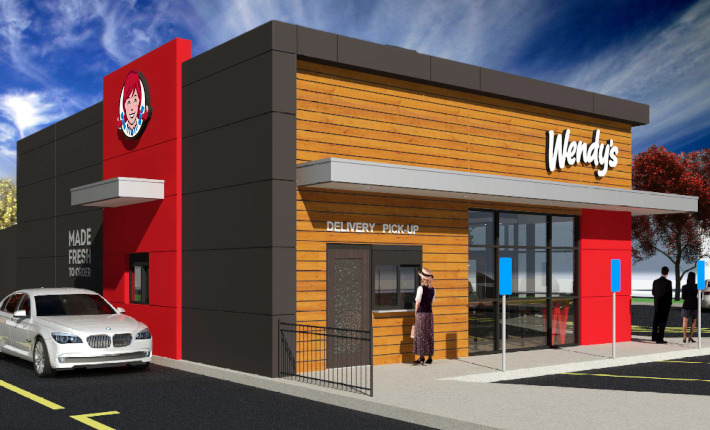Fast Food design of the future
A list of examples of fast food design of the future. New key players in the fastfood industry such as Plant Power Fast Food that show the way to the initiatives in sustainable design and the initiatives of big fastfood companies like Wendy’s, McDonald’s and Taco Bell. Fast Food has a large footprint within the hospitality industry and their sustainability efforts can go a long way!
4 minutes read
Sustainable Fast Food design
Big fast food companies like Starbucks and McDonalds work with NextGen Consortium by Closed Loop Partners to bring leading brands, industry experts and innovators together to reimagine foodservice packaging, accelerating sustainable and circular solutions to reduce waste on a global scale. The Consortium’s first initiative was exploring sustainable and scalable alternatives to the single-use, to-go fiber cup.
Although packaging is one of the sustainability cornerstones lots of fast food companies invest in – the building, the design, the use of materials can make a difference for the environment and with rising energy prices for the revenue. In this article the example of the McDonald’s flagship location in Orlando is shown, here they want to achieve the Zero Energy-Certification of the International Living Future Institute. The International Living Future Institute’s (ILFI) Zero Energy (ZE) Certification was created to allow projects to demonstrate zero energy performance, building an advanced cohort of projects with the integrity of third-party performance certification. The Market Drayton McDonald’s in England also shows much investment in this area.
Here in the Netherlands, McDonalds is using ‘Scale for Good’ in particular to reduce waste, design a more sustainable menu, and all of their new restaurants are gas-free by default. When building and renovating, they are constantly taking new sustainability measures. These include LED lighting in all restaurants, heat recovery, energy-efficient equipment and water-free urinals. Since 2008, all branches have been purchasing 100% green electricity.
Lots of fast food company’s have a sustainability promise, such as KFC UK, which states it will be a circular zero waste company by 2035. KFC UK also wants to become a net zero carbon business by 2040 or sooner. To reach those goals they launched a partnership with the University of Liverpool’s Zero Carbon Research Institute. They also work together with the Zero Carbon Forum. This forum is helping the hospitality to hit net zero carbon. Companies such as Burger King, BrewDog, Fridays, Pizza Hut, IHG and many more, are members! Below the examples!
Net zero energy-designed McDonald’s restaurant at the Walt Disney World Resort
McDonald’s completed the construction of a first-of-its-kind restaurant in 2020, designed to generate enough renewable energy on-site to fulfill 100% of its net annual energy consumption. Their global flagship restaurant will serve as a learning hub for McDonald’s to test solutions for reducing energy and water usage, a testament to the company’s ongoing commitment to sustainable innovation. Watch the video in the article to see what they have come up with there. Meanwhile, Chicago also opened a sustainable restaurant, check out the article on the energy-neutral McDonalds in the link in the title. You can check out the Chicago branch below.
Dit bericht op Instagram bekijken
Plant Power Fast Food
A great example of sustainable fast food design! The sustainability of the food but also in the interior, the cutlery and the plates of Plant Power Fast Food. We previously wrote about Plant Power Fast Food, the fastest growing 100% plant-based fast food restaurant chain in the USA which announced the opening of its new Los Angeles location in the heart of Hollywood in March this year. Their menu is completely plant-based and offers a wide range of vegan dishes from burgers, fries, shakes and ‘chicken’ nuggets to salads, fresh juices, a children’s menu and a full selection of breakfast items. They also place a high value on interior sustainability; in their newest restaurant, tables, booths and furniture are made from renewable bamboo and the chairs are from recycled plastic. Disposable cutlery is all plant-based and compostable, as is most takeout packaging. They have twelve locations in California at the moment.
UK’s first net zero carbon McDonald’s
In December 2021 we spotted the UK’s first net zero carbon restaurant by McDonald’s UK. The restaurant incorporates the most recent developments in sustainable building design whilst also retaining the iconic McDonald’s look and feel. The goal of McDonald’s UK is to achieve ‘net zero carbon’ emissions for all 1,400 restaurants and offices by 2030. To achieve this, they use renewable electricity and the walls are insulated with British sheep wool, wall signs are made from used coffee beans, curbs are made from recycled plastic bottles, there is even a Drive-Thru made from recycled tires and a biodiversity garden. You can find out more in the link to the article in the title. We wonder which of these initiatives will reach the Netherlands!
Taco Bell Defy
Another large well-known chain that values sustainability and innovation is Taco Bell. For example, this year we wrote about their renovated Taco Bell Defy in Brooklyn Park, Minnesota. Here they built a four-lane drive-thru, the first model of its kind, with two floors and innovative technology and design. Like its own vertical elevator to bring Taco Bell’s menu items directly from the kitchen to the fans. Although Taco Bell Defy is inspiration and a great example for other drive thru’s, we didn’t read about any sustainable measures in this new building.
Global Next Gen Wendy’s
In August this year Wendy’s announced that they are going global with a new standard for their restaurant design, Global Next Gen Wendy’s. The goal is an improved customer, crew and digital experience. Starting this fall, Wendy’s new traditional restaurants will have a sleek and modern design, with optimized décor and the latest technology to deliver more Wendy’s to people with an emphasis on convenience, speed and accuracy.
For example, Wendy’s will implement a pickup window for delivery drivers and there will be special mobile order picking racks so that online orders can be picked up more conveniently. They will also update the kitchens and last but not least, they are going to use modernized technology to create an optimized infrastructure. More information about this Next Gen Wendy’s can be found in their press release, link in the title. Remarkably, sustainability barely plays a role in this new design and the focus is mainly on optimizing processes. What is mentioned is that the new buildings take more efficient elements such as lighting and HVAC (Health, Ventilation and Air Conditioning) to reduce the use of energy and associated costs into account.


